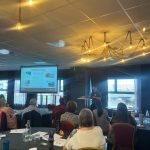
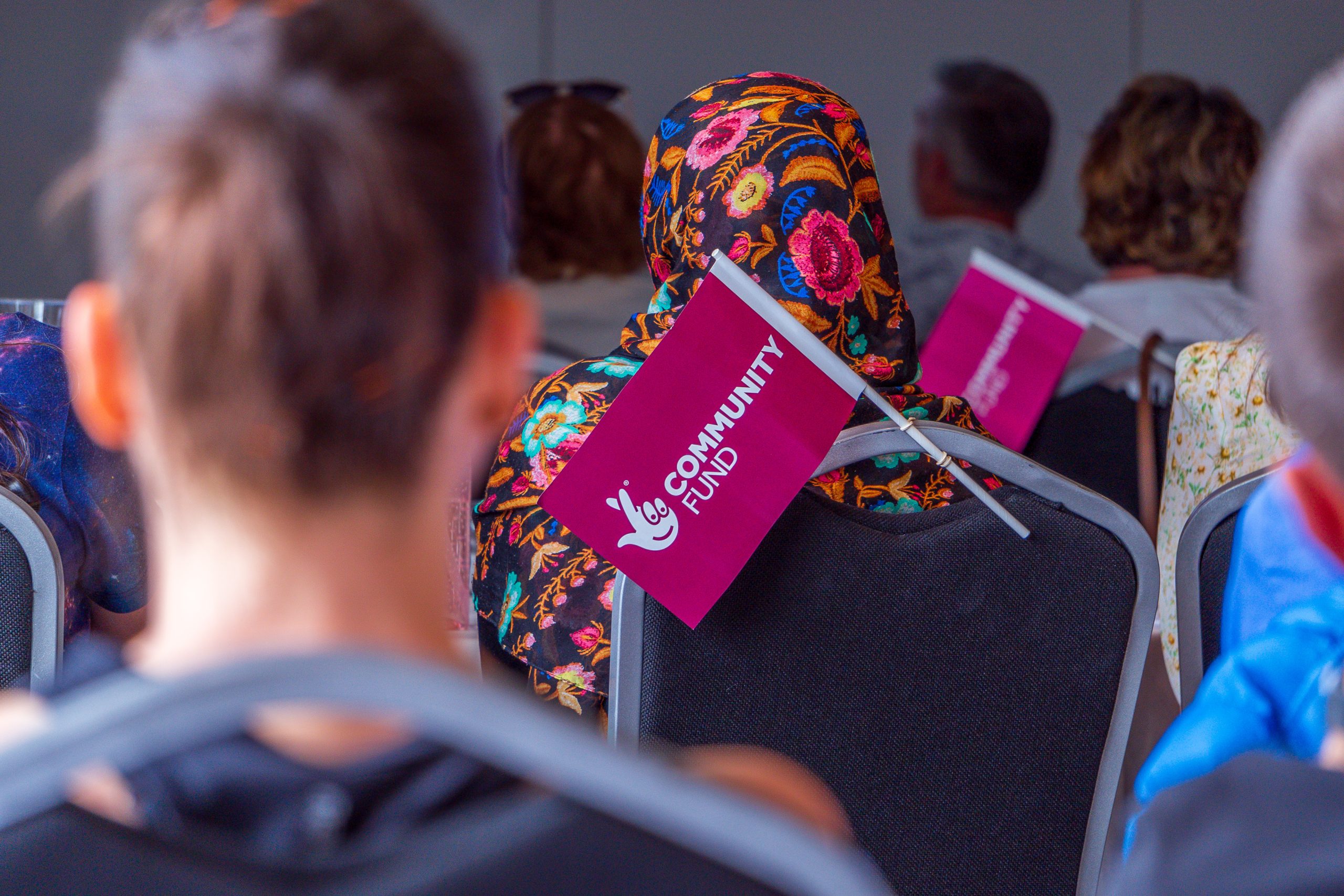
On Friday 23 June patients, carers, healthcare professionals and local charities gathered in Leeds for a day of connection and empowerment at Thrive with brainstrust in Leeds. In this article we share more about how the day went and how we left feeling more in control, positive and ready to face the road ahead.
The day kicked off at 11:00 with the brainstrust team welcoming attendees with cuppas and pastries, from the out there were smiling faces and engaged conversation as we all celebrated the opportunity to connect face-to-face. It was wonderful to see attendees relishing the opportunity to speak to others in a similar situation and benefit from the power of connection.
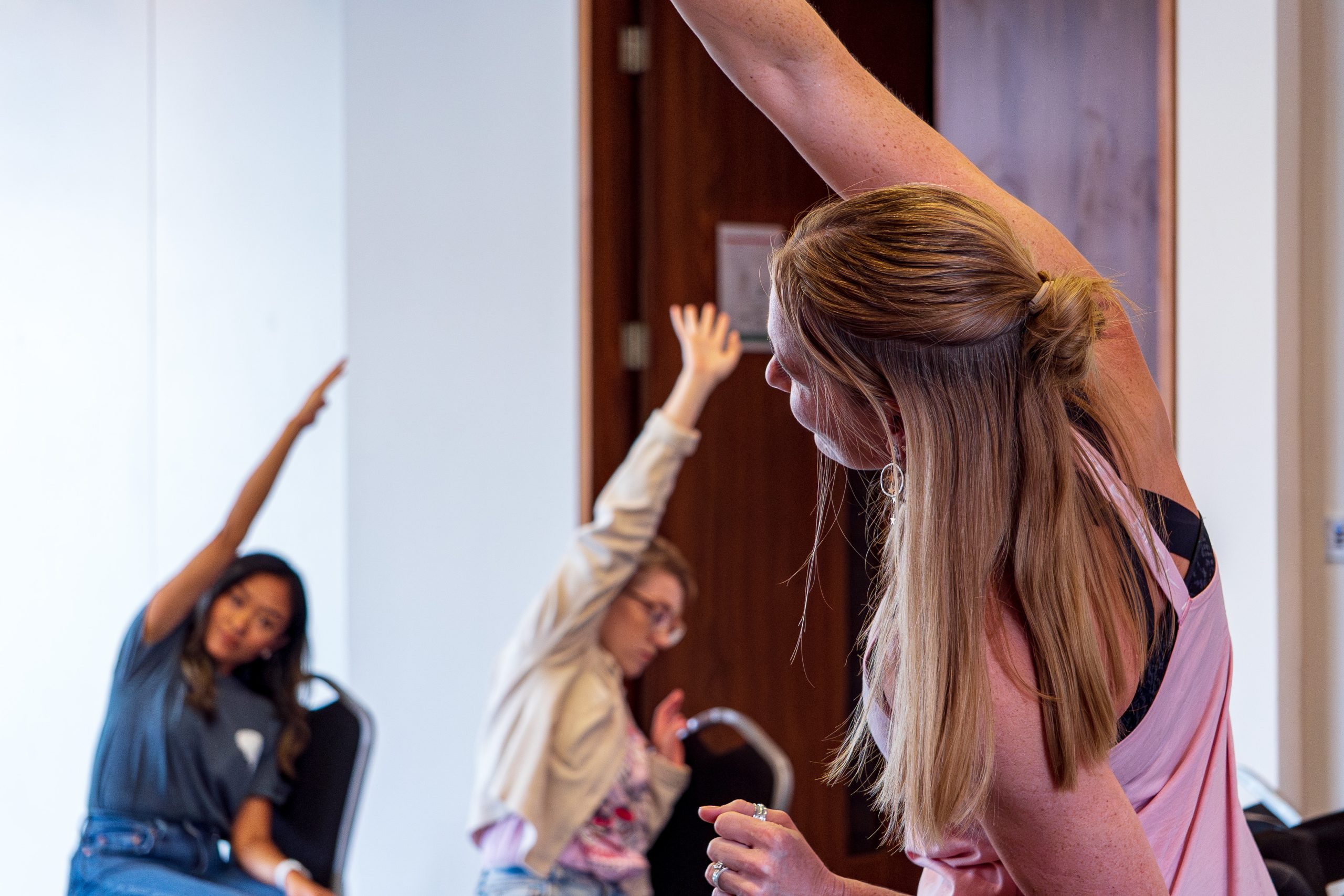
Professor Susan Short was the keynote speaker for the morning session, delivering a talk on cannabinoids in brain tumour treatment. The talk took us on a journey, first introducing us to the challenges of the landscape before highlighting the positive progress and exciting developments in current research around cannabinoids. We’ve written about the ARISTOCRAT trial that Susan delivered her talk on, click here to learn more.
Getting to be in the company of so many inspirational people made me feel extremely grateful. The vast range of topics covered, conversations had and knowledge shared made for a special experience for everyone involved. – Adam, Patient Involvement Officer
Next up it was time for lunch. This was a lovely opportunity for relaxed conversation between attendees accompanied by good food and a beautiful view of the Leeds canal.
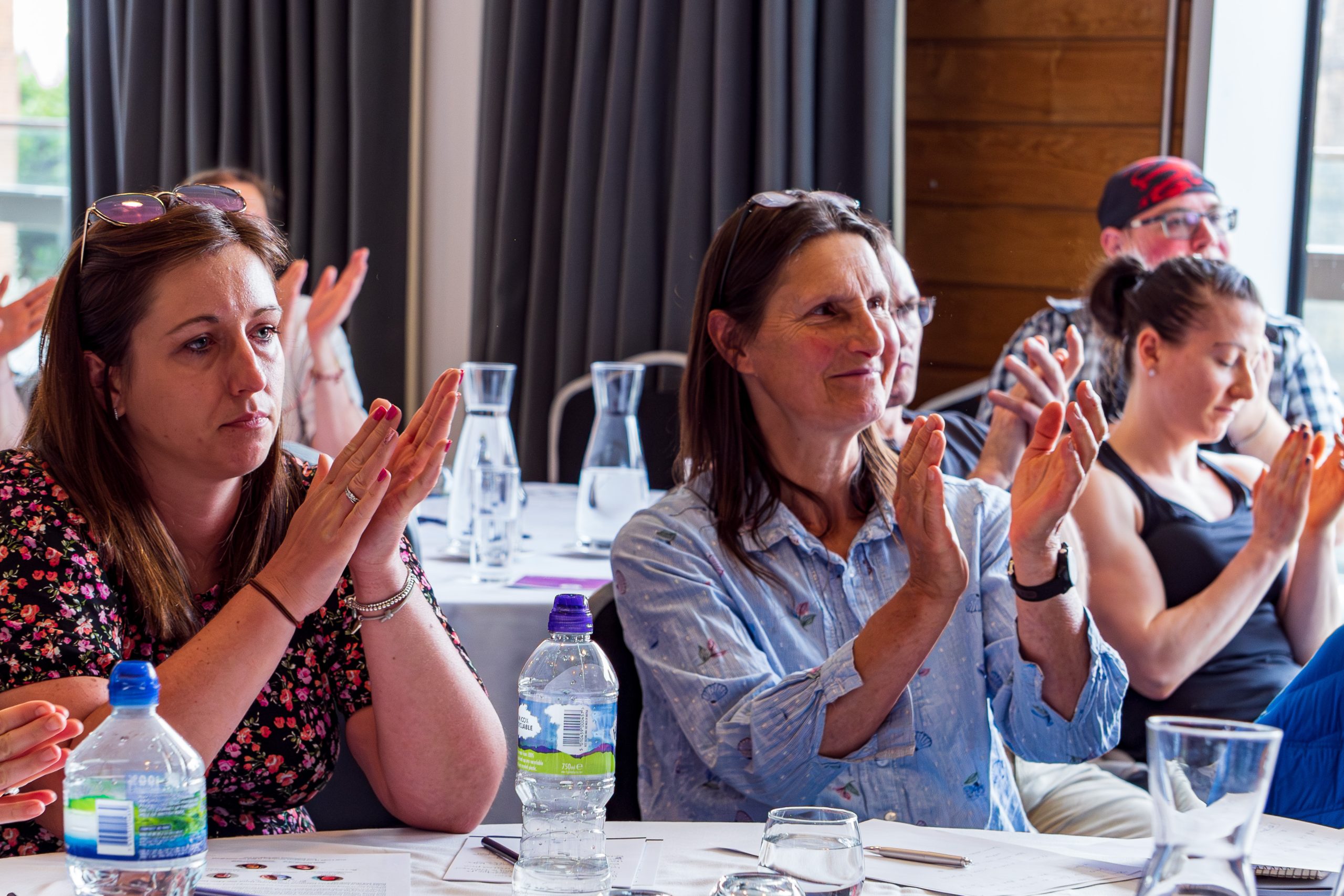
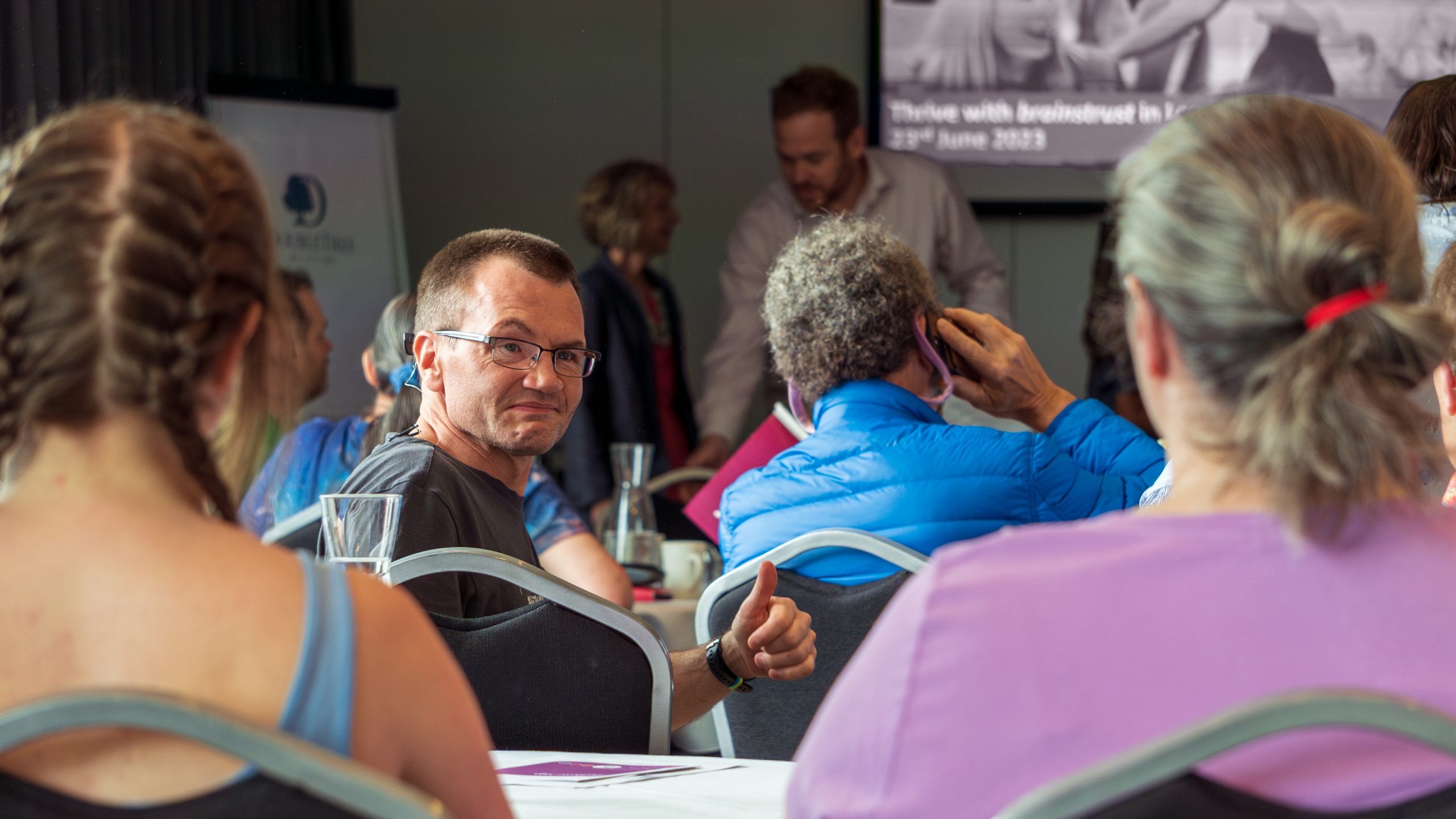
I enjoyed the opportunity for networking with the community and other healthcare professionals. It was great learning more about brainstrust as well as the latest technical and drug developments. – Occupational therapist
With bellies full we headed into the afternoon sessions. Ryan Matthew, who you may recognise from the silver screen since his appearance in Saving Lives in Leeds, was the keynote speaker for the afternoon. Ryan’s talk focused on novel and emerging technologies in brain tumour treatment. Ryan looked at the whole journey from diagnosis, through treatment, to recovery highlighting how technological developments can improve care. It was enthusing to hear about so many positive and exciting developments and to see how the patient experience was being put at the centre of these novel developments. Again, the Q&A session demonstrated just how engaged the brain tumour community is with developing research. It was great to be a part of such a lively and enthusiastic conversation.
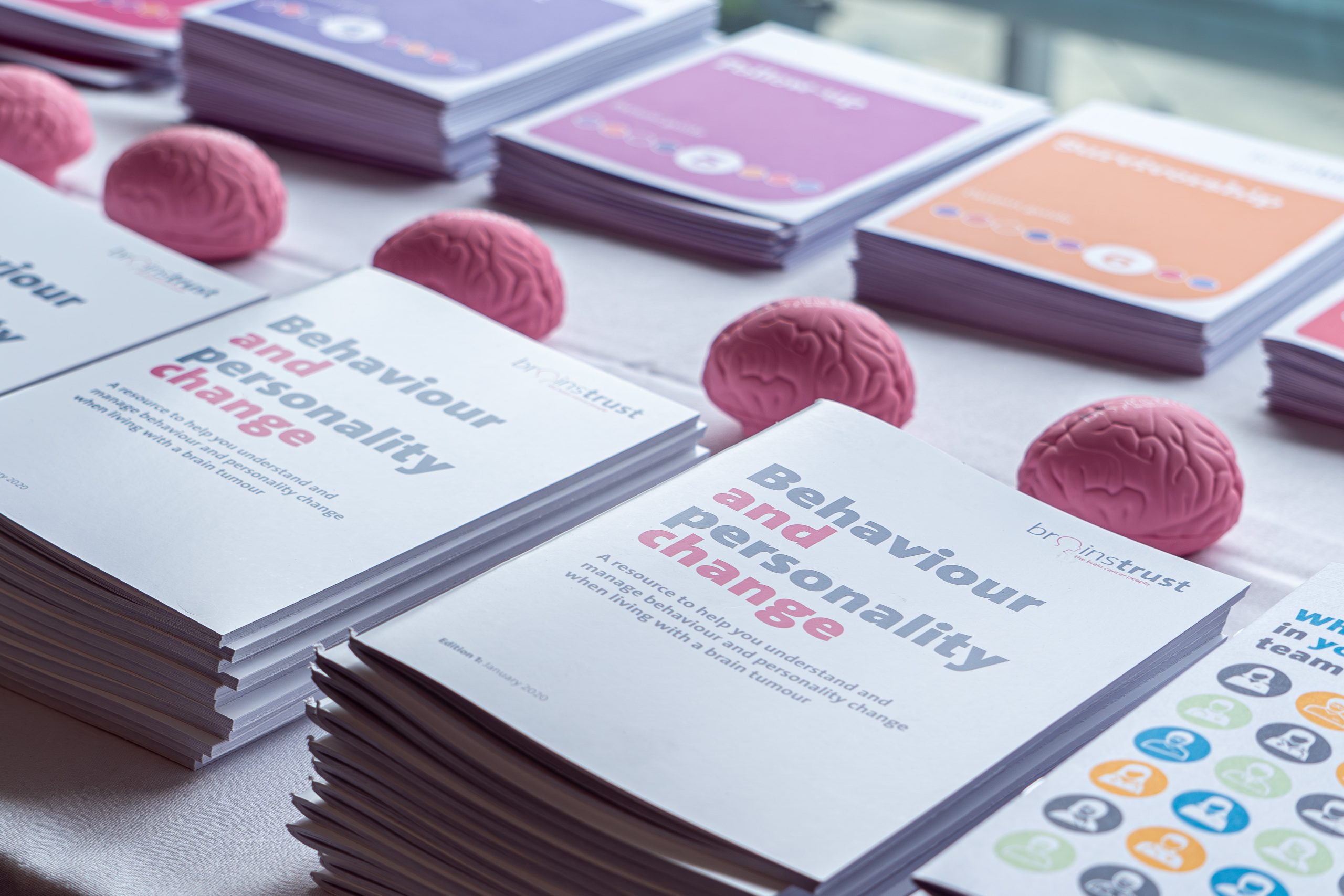

It was a privilege to meet so many incredible patients and caregivers and to hear their experiences. Their determination and resilience towards such a journey is nothing short of inspirational. – Ellie, Resources Officer
We often hear bleak facts and stats when it comes to brain tumour treatment, survival and recovery. Both Ryan and Susan’s talks showed us just how much progress we are making. Reminding us that if we keep leaning in, we can secure better outcomes for the brain tumour community. Find out more about brain tumour research, and the role you can play, here.
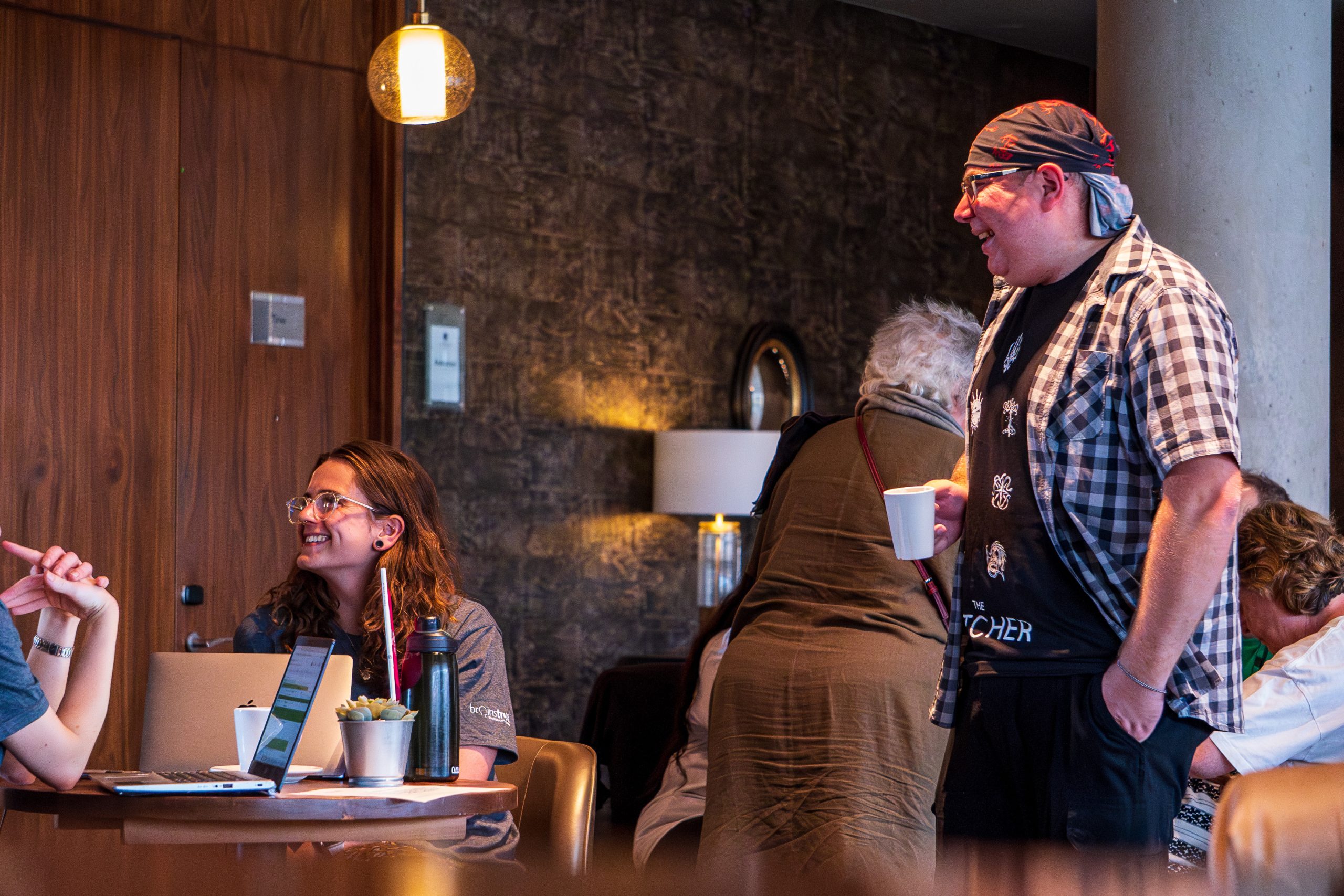
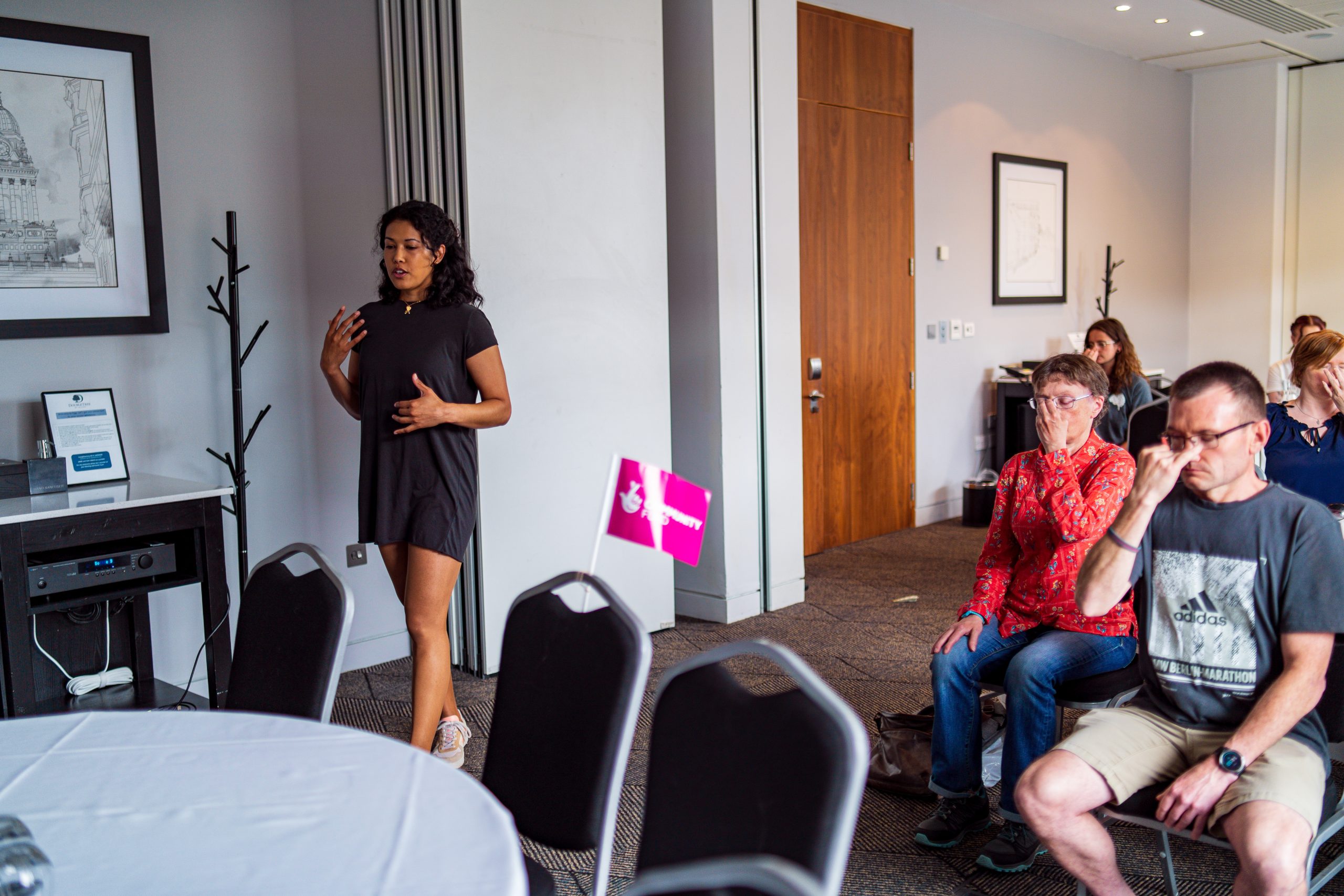
Energised by the Ryan’s talk, we broke out into our wellbeing sessions.
The group enjoyed chair yoga with Clare as well as a mindful breathing session with Kate. Attendees from both groups returned to the main room looking decidedly more relaxed! We came away with practical, applicable skills to help us cope better with the challenges we face.
Talking to patients, caregivers, healthcare professionals and other local organisations who attended the event made the whole experience invaluable. Some of them live as far as Hull and even Manchester. I am hoping to see them again in the near future when we start hosting meetups/workshops in the Yorkshire region. – Mariel, Support Specialist for North England
Next up we met representatives from the local Macmillan branch who spoke about how they can support people. Jill from Yorkshire Cancer Community also joined us to speak about their services. Mariel then hosted the brainstrust workshop on Behaviour and Personality change. BPC is a prevalent challenge in the brain tumour community and it’s not always easy to talk about. This workshop was a great space to break down taboo and share experiences. Attendees spoke about their challenges and coping strategies. In talking about the challenges we face, we come to realise that we are not as isolated as we thought. There’s a whole host of people who know what you’re going through and you can get support. You can find out more about managing BPC here.
The professional talks were really interesting, very well done and I like the fact they were really positive. – patient
The day’s talks were wrapped up by Adam, our Patient Involvement Officer, who spoke about our Patient Research Involvement Movement. It was another energising talk, highlighting how PRIME has attracted £20 million of investment to brain tumour research. The talk showed how patient involvement can drive real, positive change in the research space. If you’d like to find out more about PRIME and how you could get involved with research, click here.
The talks ended in time for attendees to browse resources and chat to one another about the day, their experiences and just have a good old natter.
It was wonderful to have welcomed so many of you to event. The day showed the strength that can be found in community and connection. It also showed the many developments in brain tumour research that, if we lean in and continue working hard, can create a better future for people with a brain tumour. We’d like to say a huge thank you to The National Lottery Community Fund and players of The National Lottery for supporting us.












